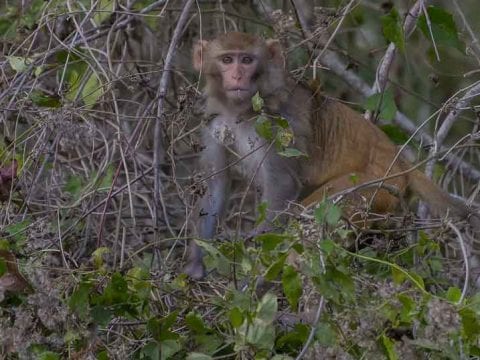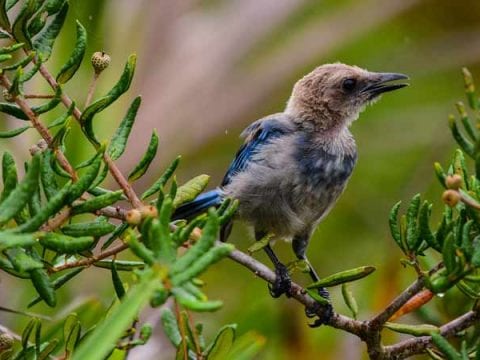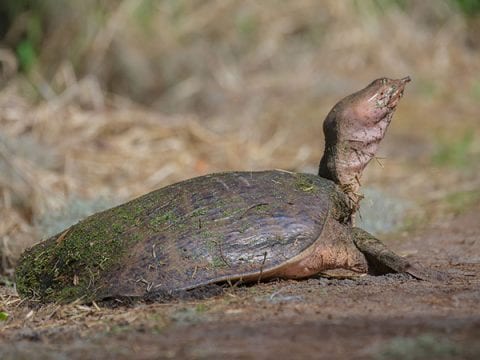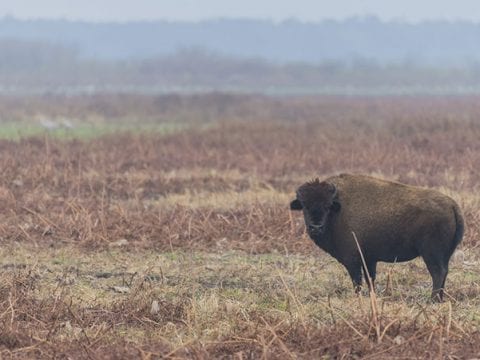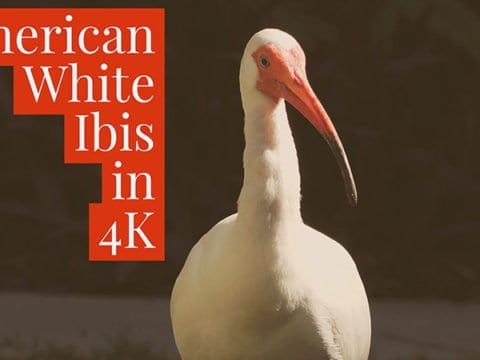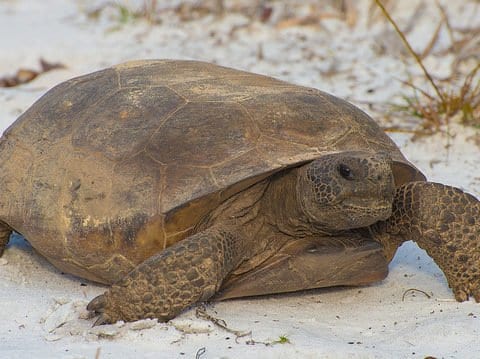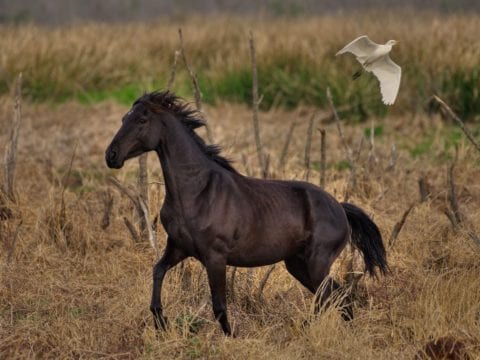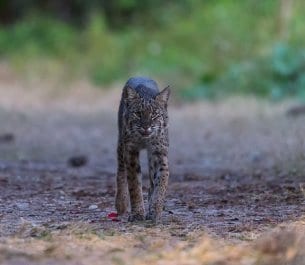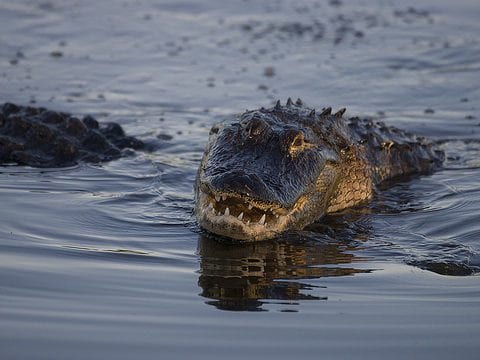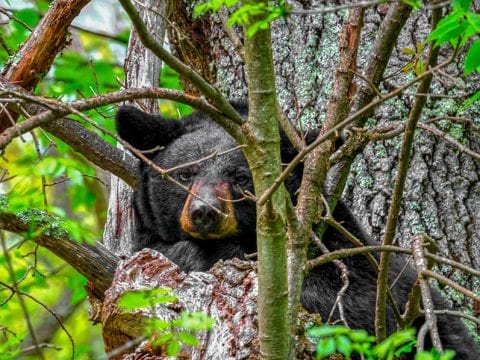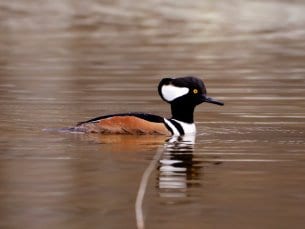
Table of Contents
I’ve seen a number of photos of the hooded merganser online but until recently, hadn’t seen one in the wild. I was hiking around Huntley Meadows Park in Alexandria, VA when I saw one out in the marsh. I spent about an hour watching a male and female clean themselves and filmed them both. These are some of the most unique birds I’ve ever filmed. Here are some photos and facts on this bird.
Hooded Merganser Facts
- Hooded Mergansers are frequently found in small rivers and ponds which is where they find their food such as crayfish, small fish, amphibians, vegetation, mollusks and aquatic insects with their thin, serrated bills
- They are a species of small ducks
- They have two nicknames, Hoodies and Sawbills
- The crest on top of the males head is used to help scare off predators, warn of rivals and attract females
- Hooded Merganser’s are sexually dimorphic and both sexes have very prominent crests that they can raise or lower
- A group of ducks can go by many different names such as a brace, a flush, a paddling, a raft or a team
- They usually travel in pairs but can be found in groups of forty
- In the winter, Hooded Mergansers travel to larger bodies of water such as marshes or protected saltwater bays
- They are very agile swimmers but do not do well on land since their back legs are set so far back on their body
- Their serrated bills help them grip their prey so that they can eat
- In French, the Hooded Mergansers is called Harle Couronne
- In Spanish, the Hooded Mergansers is called Serreta capuchona
- They have an extra eyelid called a nictitating membrane that is transparent. It is used to assist the eye while swimming, acting like a pair of goggles
- The population of Hooded Mergansers has declined due to deforestation. They are cavity nesters which means that they need plenty of trees and forest to make their nests in
- Within the bird tree, Hooded Mergansers are between goldeneyes and the other North American mergansers. They share many behaviors with them
- The Hooded Merganser is the second smallest of a species of six mergansers, they are second to the smew of Europe and Asia and it can only be found in North America
- To date, the oldest Hooded Merganser found on record was 14 years and 6 months old before he was shot
Identification
The hooded merganser are small ducks with thin bills that have a fan-shaped, collapsible crest which makes its head look oblong.
Male
The male Hooded Merganser looks different than the female because it has a black fan and a white breast with rich chestnut flanks.
Female
The female Hooded Merganser has a greyish-brown body with a small white patch that covers its stomach and breast. Her light maroon crest extends from the back of her head.
During non-breeding season the male takes on a look that is very similar to the female but their eyes are different. The female has brown eyes while the male has yellow eyes.
While flying, both genders wings are thin providing a very shallow and rapid beat. Their tail is long and round.
To court females, males expand their crests and make a low groaning call or they display a head throwing motion which causes them to jerk their heads backwards in an effort to touch their backs. Females bob their heads and give off a hoarse gacking call to court males.
Size
Length: 15.7-19.3”
Weight: 16-31 oz.
Wingspan: 23.6-26”
Behavior
Hooded Mergansers are very quiet and like to be alone. When they are flying, they let out a noise that sounds like a cricket. The male is louder than the female. In fact, it can be heard from a mile away. While swimming, they forage for insects and plants within the water by putting their faces below the water while they are paddling. They are pretty mellow ducks until they spot their prey in the water, at which time they will start to aggressively pursue their prey. When they are not flying, the make noises that sound like grunting or croaking sounds.
Nesting
They nest is tree cavities near freshwater ponds and rivers that is typically 10-50 feet off the ground. Hooded Mergansers need tress and forestry to cover their nesting but when neither can be found they use artificial nesting boxes. Their hatchlings depart with a leap down to the forest floor when they are a day old. The hatchlings can dive for food right after they have leapt from the nest. However, their dive is very quick and shallow for the first week.
Female Hooded Mergansers can 7-15 eggs in their clutch but some nests have been found with 44 eggs hidden within them. Egg are white with an extremely thick shell with a length of 1.7-2.4” and a width of 1.5-2.1” and they are incubated for 41 days.
When a female starts to incubate her eggs, she is abandoned by the male. She will then protect her nest by implementing a broken wing display to keep raccoons, bears, mink, snakes and woodpeckers.
Reproduction
The mating ritual takes place on the water and once the female and male have mated, the male will swim around the female happily. Both males and females of the Hooded Merganser are monogamous and they will remain together up until the female has chosen a place for her nest and has completed the lying of her eggs. Once she has done that, the male leaves so that the female can incubate her eggs and care for her brood. During this process, the female loses about 8-10 percent of her body weight. The breeding process happens between the end of February and the end of June and the time period depends solely on the region where the Hooded Mergansers are.
Twenty-four hours after eggs have hatched the hatchlings leave the nest and are well on their way to diving and foraging for their own food. However, they will remain with their mother for both warmth and protection.
Migration
Hooded Mergansers are short-distance migrants. For winter, they are in the United States in regions where winter temperatures will allow for icy conditions on rivers, lakes and ponds. They migrate north so that they can spend some time in the Great Lakes and southern Canada. During springtime, they arrive early at their breeding grounds, just within a few days of the ice melting. Hooded Mergansers would rather follow waterways instead of flying.

